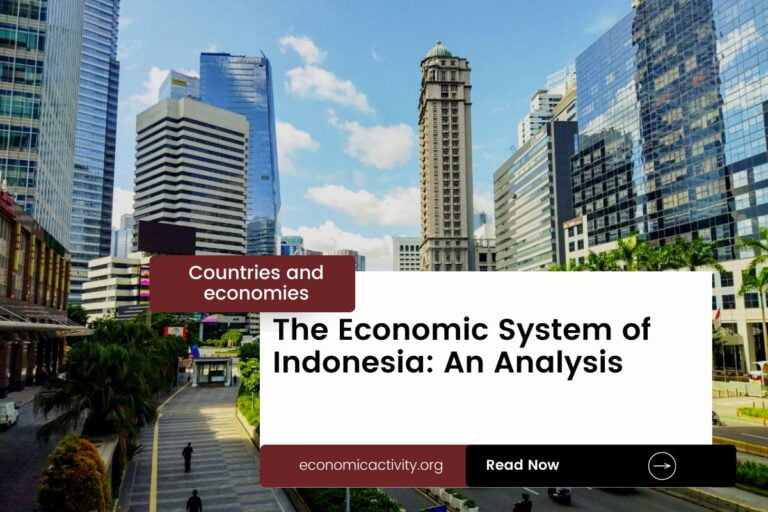Chile, with a population of 19,603,733, is ranked 62nd in the world, just behind Kazakhstan. Located in South America, it covers a total area of 756,700 square kilometers, ranking 36th globally, just behind Turkiye.
Chile’s economy in 2022 is positioned as the 43rd largest in the world with a GDP of $301,024,724,911.923 USD. It ranks behind Colombia, which has a GDP of $343,622,114,560.409 USD. In terms of GDP per capita, Chile ranks 61st globally with $15,355.4797 USD. It lags behind Romania, with a GDP per capita of $15,786.8017 USD.
Despite facing challenges, Chile continues to show resilience and potential for growth in various sectors of its economy.
What are the economic activities of Chile?
- Primary activities: 4.2% of GDP.
- Secondary activities: 32.8% of GDP.
- Tertiary activities: 63% of GDP.

Primary Sector of Chile
Chile’s primary sector, particularly agriculture, thrives due to its diverse climate and abundant natural resources. With 14.25% of the land dedicated to agriculture, the country produces a variety of goods, including grapes, milk, apples, wheat, potatoes, chicken, tomatoes, sugar beets, maize, and oats.
Despite contributing 4.2% to the GDP, agriculture plays a vital role in the economy. The top ten agricultural products based on tonnage highlight the sector’s significance, showcasing the variety and importance of crops and animal products in Chile’s agricultural industry.
With a diverse geological landscape, the primary sector thrives on abundant natural resources like copper, timber, iron ore, nitrates, precious metals, molybdenum, and hydropower. These resources play a crucial role in driving the economy through mining, forestry, and energy production industries.
Chile’s oil economic activity is relatively modest, with a daily production of around 5,000 barrels. Despite ranking 61st globally in oil production, the country holds reserves of 150 million barrels, representing just 0.01% of the world’s total reserves.
Chile’s gas production contributes significantly to its economy, with 1008 million m³ produced in 2020, ranking 67th globally.
Secondary Sector of Chile
What is the secondary sector or what are secondary activities?
The secondary sector encompasses industries that transform raw materials from primary activities into finished products for consumption. In Chile, main industrial products include copper, lithium, minerals, foodstuffs, fish processing, iron and steel, wood products, transport equipment, cement, and textiles.
Manufactures in Chile’s total exports accounted for 18.1% in 2023. While significant, other sectors like mining and agriculture play a more crucial role in the country’s economy.
Tertiary sector of Chile
What is the tertiary sector or what are tertiary activities?
The tertiary sector in Chile encompasses a wide range of services that contribute to the economy through the provision of knowledge and expertise. This sector includes activities such as restaurants, healthcare and medical care, education and training, banking and finance, communication and information exchange, media production and distribution, tourism and hospitality. These services play a crucial role in enhancing productivity, meeting various needs, and improving overall performance in the country.
Among these, Chile’s economy greatly relies on tourism, contributing significantly to its GDP. With 5,431,000 annual arrivals, equivalent to 0.277 tourists per capita, popular destinations like the Atacama Desert and Torres del Paine National Park attract numerous visitors, driving the country’s tourism industry and economic growth.
Another example of tertiary economic activity is the mobile cellular sector, with 26 million subscriptions, equating to 135 per 100 inhabitants. This connectivity fosters technological growth, enhancing digital innovation and services.
Military Activities and Economic Sectors of Chile
The military is a good example of how different economic activities work together. In the primary sector, resources are extracted for military use, like metals for weapons. In the secondary sector, factories make military equipment. The tertiary sector includes services provided by the military, such as training and support. The quaternary sector focuses on research and development for new technologies, while the quinary sector involves high-level decision-making and strategy.
In Chile, the military expenditure in 2023 is about $5,491.7 million. This spending is 1.83% of the country’s GDP. The active military force has 77,200 personnel, which means there are about 9 active military members for every 1,000 people in the country.
Biggest company in Chile
Which is the biggest company in Chile? The largest is SQM, with a market value of $22.11 billion. It operates in the materials industry, focusing on mining and chemical production. SQM was founded in 1968 and plays a key role in the country’s economy.
International Trade of Chile
Import Activities of Chile

Chile’s import activities are of high importance, with total imports in 2023 amounting to $85,505,142,449, equivalent to 39.35% of its GDP.
Chile’s key import partners are China (26%), US (22%), Brazil (10%), Argentina (5%), and Germany (3%). The country mainly imports refined petroleum, cars, crude petroleum, garments, and trucks.
Exports Activities of Chile

Chile’s total exports in 2023 amounted to $94,935,525,007.93, accounting for 35.67% of its GDP. This high percentage underscores the crucial role of export activities in driving the country’s economy.
Chile’s export activities are primarily focused on copper-related products, with China being its largest export partner at 39%. Other key partners include the US, Japan, South Korea, and Brazil. The country exports commodities such as copper ore, refined copper, carbonates, fish, and raw copper.
Chile economy challenges in 2024
Chile’s export-driven economy faces challenges in 2024. Despite being a leading copper producer, the country grapples with lingering inequality and rising public debt. Political violence has hurt the economy, overshadowing progress in poverty reduction. The COVID-19 rebound was swift, but sustaining growth remains uncertain.




Leave a Reply